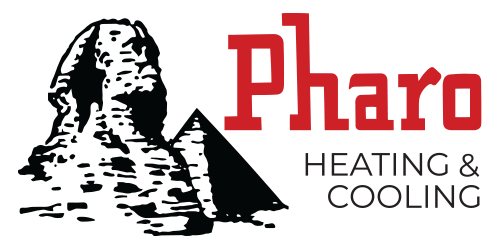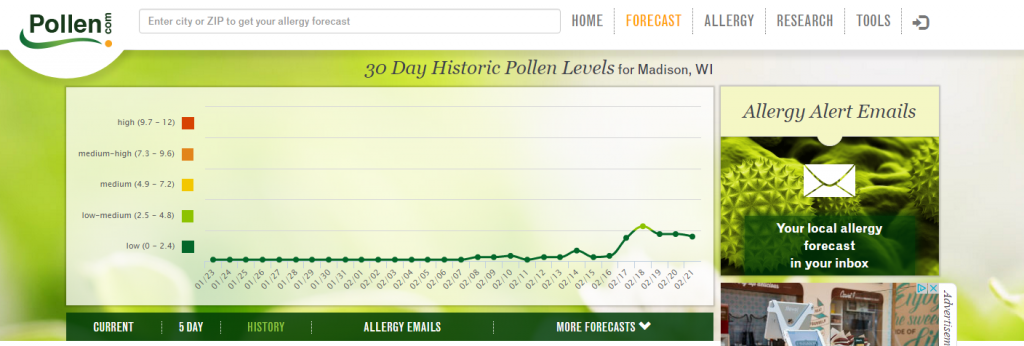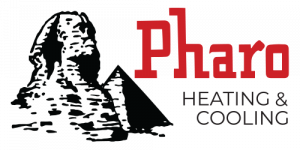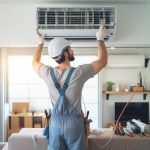From Snowing to Sneezing – The Pollen Count and Adult Allergies!
According to pollen.com the pollen levels are on the rise and March is typically the month to watch for predicting the pollen forecast. With an increase in many adults developing allergies late in life, this news is sometimes met with fear and anxiety.
How do they Forecast the Pollen Levels?
By taking the historical data from previous years and looking at the current pollen level, scientists are able to provide a fairly accurate forecast. This is a must for those that suffer heavy allergies as they can plan their activities around this. If you suffer from allergies you certainly have been in one or more of these situations:
- You substitute going to the park for a movie on a heavy pollen count day!
- You have your spouse drive while you take your favorite allergy suppressant, and possible take a nap!
- You carry tissues wherever you go!
- You wear glasses instead of putting in your contacts.
- You close all the windows in the house on most days in spring!
What is the Pollen Index?
The pollen index takes into consideration the total estimated pollen emitted for a calendar year. This year, the pollen index is off to a high start due to the mild weather we have been having. The culmination of a longer season of spring-like weather followed by a dry summer will yield a higher pollen index. Some geographical areas have higher indexes due to the amount of pollen-growing plants or crops. It’s not a secret that Madison or Wisconsin itself is one of the worst places for allergy sufferers.
Adult Allergies and the Growing Problem
For many people, the onset of allergies come later in life and as a result requires a change in lifestyle. The most common allergy, allergic rhinitis (hay fever), is increasing in the US and around the world . There is still much to learn about allergies including what triggers them.
One theory as to why the increase in allergies suggests we are living in a cleaner more sanitary environment, and we don’t give our body’s immune system something to fight off, so it focuses it’s efforts on allergens.
A more traditional reason would suggest the increase in air pollutants, chemicals used in products, less ventilation in homes and the foods we eat.
One thing that is proven is that as we age, so does our immune system. That’s why more seniors get pneumonia than 20-year-olds.
Ways to Combat the Pollen and Allergy Symptoms
Although walking around in a bubble suit would protect you from the pollen, it certainly would get in the way of your lifestyle.
If you are suffering from mild allergy symptoms such as hay fever and the like, normal over-the-counter antihistamines work great. If no relief from OTC drugs, a visit to a specialist might be in order. An allergy expert normally can identify the specific triggers and recommend medications to help.
Do whole home purifiers help with Allergies?
Whole-house air-cleaning systems can be incorporated right into your home’s Heating and Ventilation System and can help with mild allergy and asthma.
For the more severe allergy or asthma suffers, the solution might be a whole home air purifier. These units can reduce allergens, particulates and toxins in the home. Whole house air purification virtually eliminates allergens, bacteria, dust and smoke by as much as 100 times more effectively than conventional furnace filter systems.
ABOUT THE AUTHOR
Clint Pharo is a local HVAC Contractor in Madison, WI. He and his team of HVAC professionals at Pharo Heating & Cooling cover a broad range of services in commercial buildings, new home construction, and residential homes and locally represent Bryant Heating and Cooling Products. He regularly posts on his company’s blog at www.PharoHeating.com.











